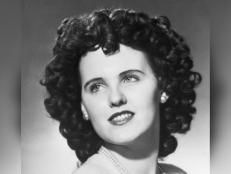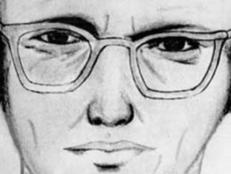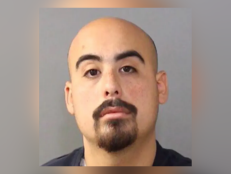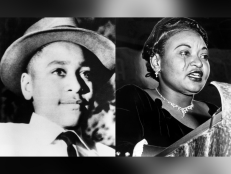The Ghoulish & Unforgettable Crimes Of Murderer & Grave-Robber Ed Gein
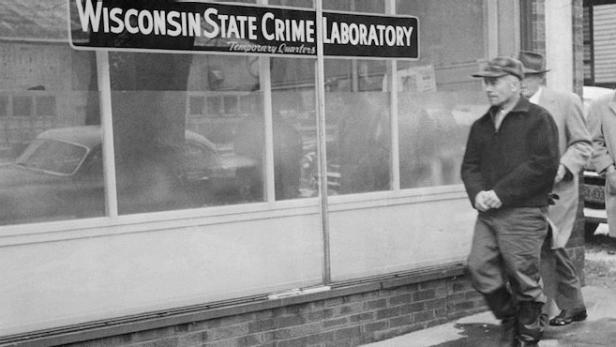
Getty Images
In small-town Plainfield, Wisconsin, a hard-working farming and hunting community in the 1950s, by all accounts local bachelor Ed Theodore Gein was a trusted neighbor. He did odd jobs as a handyman and babysat local children — while seen as maybe a little odd, he was nonetheless invited into their homes and offered a seat at their dinner table. He later became known as “The Plainfield Butcher.”
Much is made of Ed Gein’s upbringing, as his mother was smothering and overly protective of her two sons. Augusta Gein was also fanatically religious and distrustful of everyone, especially women, who she thought were all sinful and who she kept away from her sons as much as possible. Augusta taught her boys that all women were “painted harlots” and instruments of the devil. She also had no use for her alcoholic husband, who she only stayed married to because she thought divorce was a sin.

AP Photo
The Gein patriarch, George, died of a heart attack when Ed was 30, leaving him and his brother Henry alone with their mother, and even more isolated. Four years later, after a fire broke out on the Gein property, Ed claimed he got separated from his brother Henry in the blaze, and couldn’t find him in the conflagration. After returning to the property with a search party in tow, Ed somehow led them directly to his brother’s lifeless body. Although there was some suspicious bruising on his head, Henry was pronounced dead due to smoke inhalation. Ed was never charged with anything related to his brother’s death, but some have questioned whether he may have been the first victim.
With his father and brother gone, the Gein homestead was occupied solely by Ed and his beloved, holier-than-thou mother. Ed never dated, preferring instead to spend his time listening to his mother tell fire-and-brimstone Bible stories or retreating to his room to read his favorite pulp magazines. Ed devoured detective stories, geographic magazines with articles on cannibalistic tribes and head-hunters who made shrunken heads, and lurid tales of Nazis making lampshades of human skin. He’d also picked up a used copy of Gray’s Anatomy, about which he became quite an expert. Sadly for Ed, this relatively peaceful time in his life didn’t last long, as Augusta Gein suffered a stroke, after which Ed became her full-time nurse, which cemented their closeness even further. When she passed away just about a year later, Ed was adrift.
Gein boarded up his mother’s room in their farmhouse, leaving it untouched as a shrine, while he let the part of the house he occupied descend into squalor. Without his mother around to preach against drunkenness, he began allowing himself a beer or two at the local bar, Hogan’s Tavern, owned by Mary Hogan. That is, until the mysterious disappearance of Hogan in December 1954. All that remained of her in the bar was a pool of blood. A .32-caliber cartridge was found lying nearby. Hogan’s disappearance was the talk of the town, and Gein was known to joke around, “Mary’s not missing — I got her hung up back at my place right now!” His off-color humor didn’t raise too many eyebrows, as he was known for being a bit of a goofball without many social skills.
On the opening day of hunting season in the fall of 1957, almost all the menfolk of Plainfield were off looking for deer. All except Gein, who was ironically known for being squeamish at the sight of blood and uncomfortable with the idea of hunting.
He stopped in to see Bernice Worden at Worden’s Hardware and Implement Store, where he picked up some anti-freeze. He’d brought a .22-caliber bullet with him in his pocket, which he put into one of the hunting rifles for sale in the shop, and took down Worden. When her disappearance from the store was noted, along with a pool of blood reminiscent of the Mary Hogan scene, Gein’s name was noticed in the receipts from his anti-freeze purchase.
The police rushed to the Gein farmhouse, but found it deserted, as Gein was having supper with some neighbors. While a couple of cops went to look for Gein for questioning, and ended up arresting him, others began to poke around his property, looking for anything suspicious.
Ed Gein [Wikimedia Commons]
The horrors they found ensured Gein’s place in the history of depraved killers and ghouls, despite his only being known to have slain two people, and only ever tried for one murder.
Police found the body of Bernice Worden, headless, suspended upside-down, gutted and “dressed” as one would a deer. Gein’s gloomy and decay- and stench-filled home offered even more nightmares. Just a few other findings, among many, were human skulls on his bedposts and used for soup bowls, a pair of lips hanging on a window shade, a belt made from human nipples, a skin lamp shade, a box of multiple female sex organs, an oatmeal box full of brain matter, and, hanging on a wall, nine human faces, fashioned into masks. One of these had belonged to Mary Hogan. Bernice Worden’s heart was found on Gein’s stove.
When it became clear that the remains of Hogan and Worden were the only two of the many found that could be linked to any disappearances, Gein explained that he had collected all the other human remains from robbing local graves.
Under investigation for murder in 1957, he was interrogated by District Attorney Earl Kileen. Gein admitted:
“I started to visit graveyards in the area regularly about 18 months after my mother died. Most nights, I would just stand and have private conversations … with my ma…. Other times, I couldn’t make myself go home without raisin’ one of ’em up first. Maybe on about nine occasions, I took somebody, or part of somebody, home with me. It was kind of an evil spirit I couldn’t control.”
Gein explained that he was able to get away with this for a period of about five years, as he always left the graves in “apple-pie order” when he was finished robbing them. He went on to state that he would watch the obituaries for when women, particularly those with a similar body type to his mother, were laid to rest and visit the next night to steal their corpses, as he had begun to have “an uncontrollable desire to see a woman’s body.” Some accounts claim that he did also dig up his mother’s corpse and bring her home.
One of the grisliest artifacts found was basically a woman suit — a pair of skin leggings and a vest made from a torso, complete with breasts attached. Gein claimed that he would wear it on moonlit nights and dance around his yard, with a woman-face mask on, and place preserved female genitalia over his own, sometimes inside a pair of women’s panties.
In a 1957 testimony to the District Attorney of Waushara County, Gein stated:
“It was sort of a sex problem … I blame all my trouble on my mother. She should have made me a girl. I almost never went out with girls. I was afraid of them. All I could think of was my mother, and how much I really loved her. I used to wonder if some kind of operation could change me into a woman.”
Gein’s headstone, which was eventually removed due to vandalism and theft. His grave is now unmarked [Bryanwake via Wikimedia Commons]
While charged with one count of first-degree murder, Gein was initially deemed unfit to stand trial and spent the remainder of his life in mental hospitals, where he was known as a mild-mannered model prisoner. He passed away in 1984 from heart and respiratory failure, and was buried next to his mother and a few feet away from Bernice Worden in the same Plainfield cemetery that he used to plunder.
For more on Ed Gein, watch the “The Grieving Process” episode of Investigation Discovery’s True Nightmares on ID GO now!
Watch Now:
Read more: Ed Gein: Psycho by Paul Anthony Woods, Cannibal Serial Killers: Profiles of Depraved Flesh-Eating Murderers by Christopher Berry-Dee, Edward Gein: America’s Most Bizarre Murderer by Judge Robert H. Gollmar, Deviant: The Shocking True Story of Ed Gein, the Original Psycho by Harold Schechter, Murderpedia

